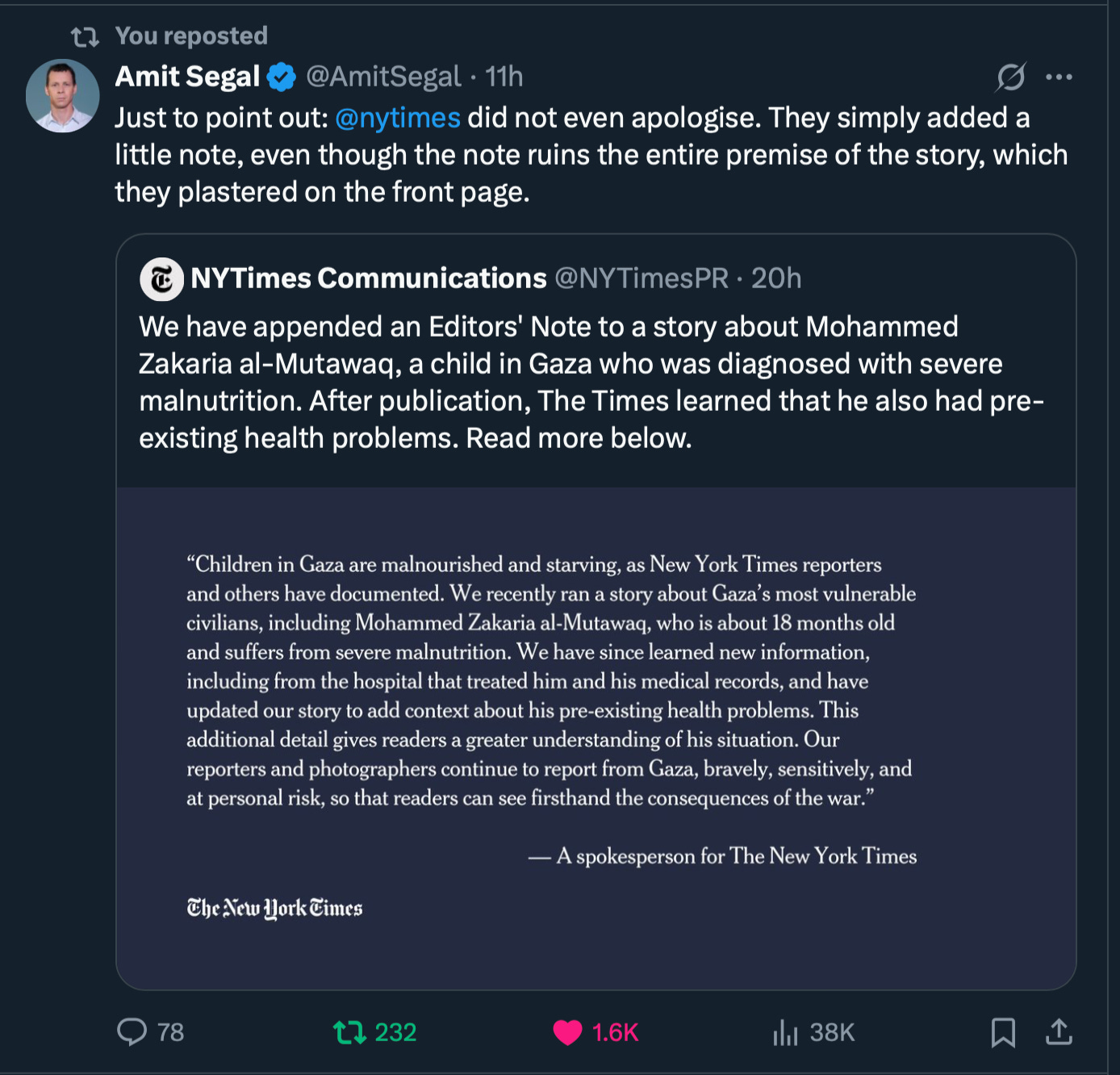Five of the MANY 'pandemic'-launch-and-substantiation' stories or features that warrant an apology from The New York Times
The New York Times has issued an abysmal, unapologetic statement and “Editor’s note” regarding the misrepresentation and misuse of a photo of a Gazan child in a front-page story last week.
Amit Segal’…


